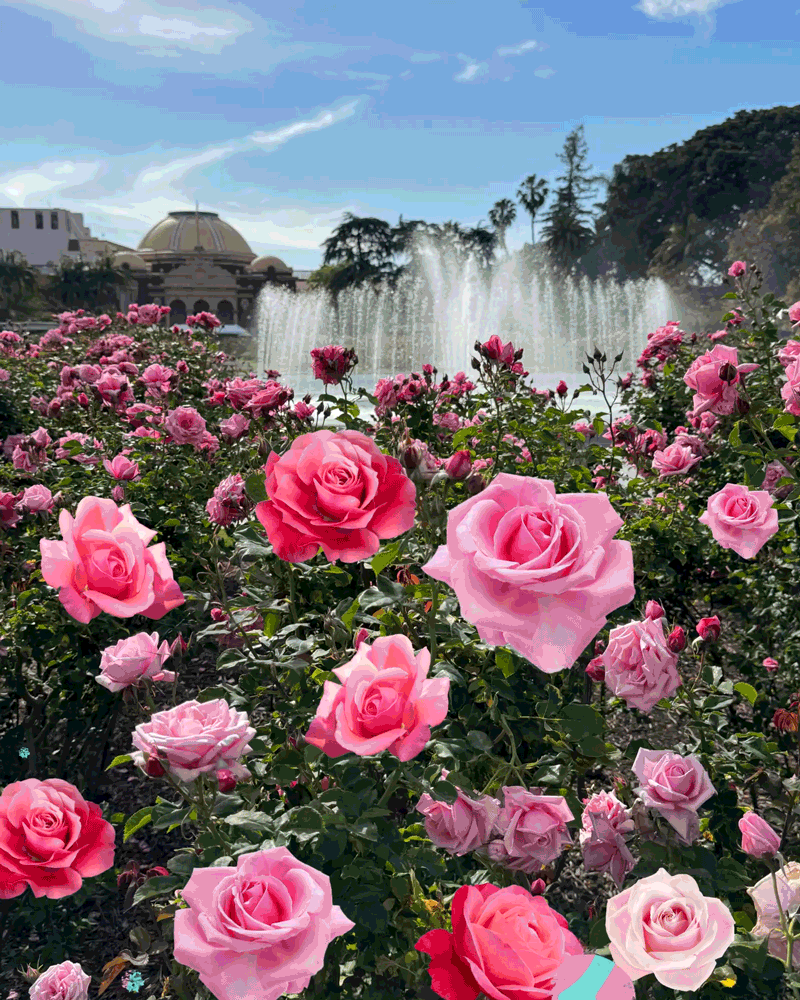It’s Time to Give Roses a ‘Tuneup’ : To keep blooming cycles going, bushes need some periodic care and attention.
- Share via
Like cars, roses need periodic maintenance--minor tuneups if you will--to keep them growing and flowering. These should occur after every cycle of bloom (rather than after every 5,000 miles), and while a rose will not quit and leave you stranded on a freeway should you miss one, it will certainly grow a lot better.
Though roses seem to be perpetually in flower in Southern California, the blossoms actually come in fairly distinct cycles. The first flowering is in early April (though it was a little late this year), the next usually in late May, one in early July and so on, right up to Christmas. This varies somewhat with the weather and certainly with where you live.
To speed up this process, you need to promptly remove the spent flowers after each cycle, otherwise much energy goes into the production of seeds in the form of rose “hips” or fruits. The rule for cutting off spent flowers couldn’t be simpler--make your cut just above a five-part leaf (the true leaf appears to be five smaller leaves).
You can fine-tune the bush by making the cut above a five-part leaf that faces in the direction you want the new growth to go, usually out from the center of the plant.
At this time of the year you should also look for weak growth and dead or damaged canes and cut these out or back to the first strong five-part leaf. You should also strip off any yellowed leaves.
Roses need lots of water and fertilizer, and while most serious rose growers fertilize every month of the growing season, it is sometimes easier to fertilize at the same time you cut off the spent blossoms. There is no end to the recommendations on how and what to feed roses, but all you really need to do is fertilize them with something .
Only Nitrogen Counts
I’ve seen abundant roses on plants fertilized with fish emulsion, a rather weak fertilizer that usually contains only about 5% nitrogen. I also know people who fertilize with very strong stuff, such as ammonium sulfate, which contains about 21% nitrogen and is a real bargain but is strong enough to burn plants if too much is used.
It’s important to note, however, that the nitrogen content of the fertilizer is just about the only thing that counts in California, according to tests conducted by the University of California. The other ingredients--the potassium and phosphorous, iron and acidifying agents--do little or nothing unless they are mixed into the soil at planting time. The important thing is to supply nitrogen in some form after every bloom cycle or every month--whichever is the easier to remember.
Scatter a granular fertilizer around the base of the plant in a circle about 6 feet across or apply a liquid fertilizer, following label directions, and then thoroughly water to push it into the soil.
Don’t underestimate how much water a rose wants. It can get by on very little, as countless roses growing on abandoned properties attest to, but it only thrives with lots. On the other hand, don’t drown it--let the soil dry a little between irrigations. A thorough watering once a week during spring, summer and fall is usually enough.
Be a little careful with new roses planted this past winter. They need less fertilizer (some people say none) and less water.
If you have now tuned up the rose for another run, but notice that the canes are getting old and woody, and that no new growth is coming from the bottom of the plant, you can try a trick that helps roses make basal breaks, a term for new sprouts that come from the base of the plant. Don’t confuse these with suckers, which are sprouts coming from the roots. Suckers should be snapped off at the roots; basal breaks encouraged.
Promoting Basal Breaks
Jon Bastian, the editor of “Santa Barbara Roses,” the excellent publication of the Santa Barbara Roses Society (P.O. Box 3082, Santa Barbara, Calif. 93130) told me that the use of Epsom salts to promote basal breaks is not folklore but fact.
Epsom salts are available at pharmacies, usually sold for soaking your feet or as a laxative, and are not to be confused with table salt or any other salt. Epsom salts are magnesium sulfate and will not add to the salt content of the soil (which is harmful to plants).
To encourage basal breaks, add this to your after-bloom routine: sprinkle one tablespoon to 1/4 cup (the recommendations vary) around the base of the bush.
Should you get strong new growth from the base of the plant, you might try a trick Bastian learned from an Italian gardener. Snap off the top of the growth when it reaches about mid-thigh. His source simply called this procedure “snapping the canes” and they will break with a snap, just like an asparagus stalk. The break will encourage the shoot to branch and flower sooner.






